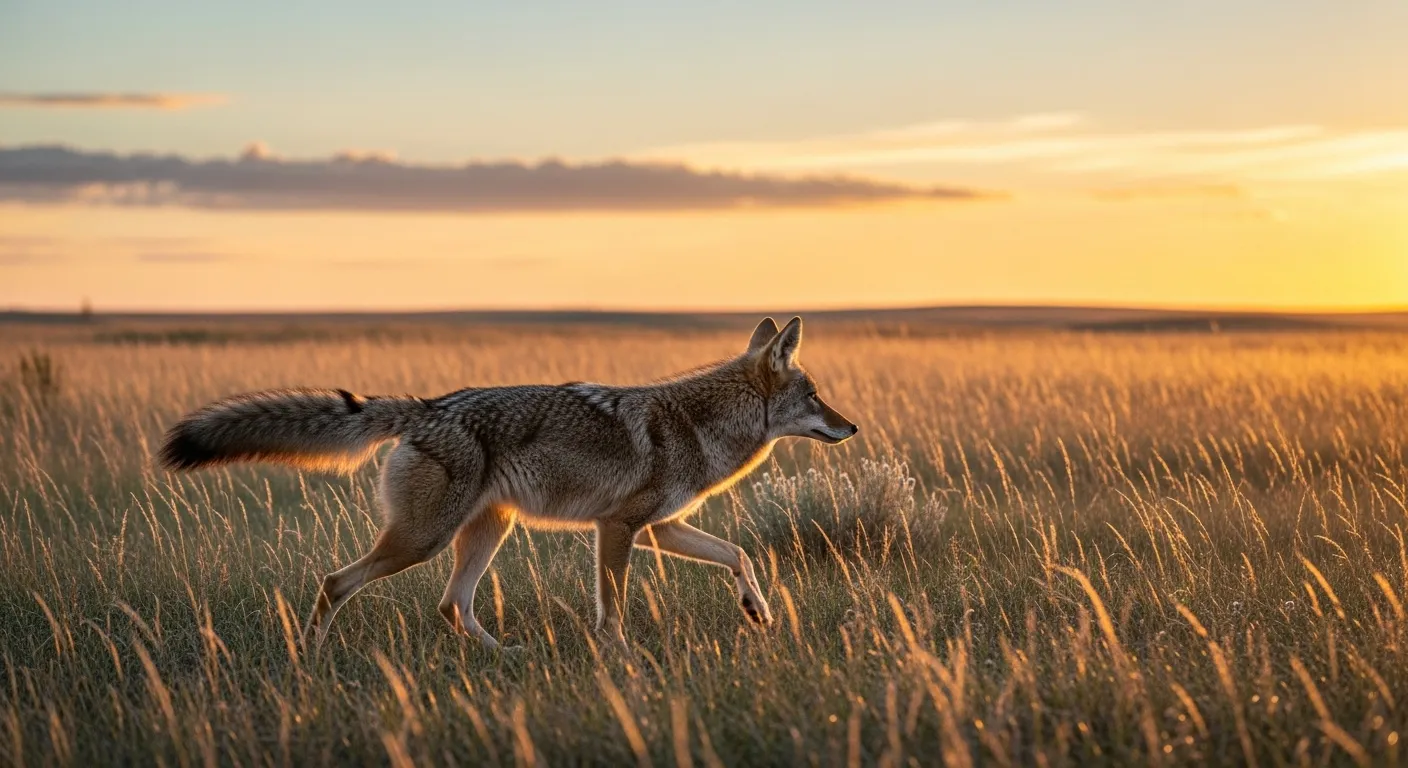
Coyotes and Foxes: The Wild Canids
Members of the dog family, or canids, are some of the most intelligent and widespread mammals in North America. Learning the difference between a coyote and a fox is a classic challenge for the backyard naturalist.
The Coyote (Canis latrans)
The coyote is a symbol of resilience. Originally a creature of the western plains and deserts, it has expanded its range to inhabit nearly every corner of the continent, from frozen tundra to bustling city centers.
Identification: Coyotes look like small-to-medium-sized German Shepherds. They typically have grizzled gray-to-brown fur, a slender body, long legs, and a narrow snout. A key field mark is their tail: when a coyote runs, it typically holds its bushy, black-tipped tail straight down. They weigh between 20 and 50 pounds. Their vocalizations are iconic, consisting of a series of yips, barks, and howls, especially at dawn and dusk.
Ecology and Behavior: Coyotes are opportunistic omnivores. Their primary diet consists of small mammals like rabbits, squirrels, and rodents, which helps control these populations. They also eat birds, insects, fruit, and carrion. In urban environments, they may prey on unsecured small pets, which is why it is vital to keep cats indoors and supervise small dogs. Coyotes are highly intelligent and social, often living in family packs, though they may also hunt alone.
The Red Fox (Vulpes vulpes)
Sly and beautiful, the red fox is a smaller, more delicate canid known for its cunning and agility. It is found across much of North America in a variety of habitats, including forests, farmlands, and suburban areas.
Identification: The red fox is most easily identified by its fiery reddish-orange coat, though color variations like silver and cross-fox morphs exist. Key field marks include black “stockings” on its legs, black-tipped ears, and a long, bushy tail, or “brush,” that is always tipped in bright white. This white tail tip is the most reliable way to identify a red fox, even from a distance. They are significantly smaller than coyotes, typically weighing only 10 to 15 pounds.
Ecology and Behavior: Foxes are skilled hunters, preying mainly on rodents, rabbits, birds, and insects. They have excellent hearing and use a characteristic “mousing pounce,” leaping high into the air to pin down prey hidden under snow or grass. They are generally solitary or live in small family groups and are most active at dawn and dusk (a behavior known as being crepuscular).
Coyote vs. Fox: Key Differences
At a quick glance, it can be tricky to tell these two canids apart. Here are the key distinctions:
1. Size and Build: A coyote is much larger and leggier, resembling a slender dog. A red fox is smaller, sleeker, and more cat-like in its movements.
2. The Tail: This is the best clue. A coyote runs with its tail held down. A red fox runs with its tail held straight out horizontally and always has a white tip.
3. Face and Snout: A coyote has a longer, more formidable snout and broader face. A fox has a much more delicate, pointed muzzle.
4. Coloration: While both can have reddish fur, the red fox’s color is typically much brighter. The coyote’s grizzled gray-brown coat provides better camouflage in open country.















